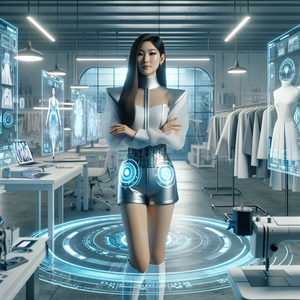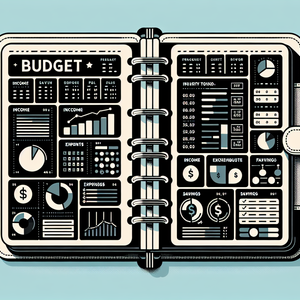The Future of UI Designer Salaries in a Rapidly Evolving Tech Landscape

To understand the future of UI designer salaries, it is essential to first grasp the current landscape. Recent industry reports indicate that UI designers earn an average salary ranging from $60,000 to over $100,000 annually. This range, of course, is influenced by various factors, including the designer's experience, the specific industry they work in, and their geographic location. For instance, designers in tech-centric cities like San Francisco or New York often command salaries that exceed these averages due to the high demand for skilled professionals in those areas. As businesses increasingly prioritize user experience, the demand for talented UI designers is surging. This trend suggests that salaries may continue to rise, particularly in sectors that heavily rely on digital interfaces, such as e-commerce and software development.
The Impact of AI and Automation
One of the most substantial factors influencing UI designer salaries is the growing presence of AI and automation in the design process. AI tools are designed to streamline workflows, automate repetitive tasks, and even assist in the creative process by generating layouts or suggesting design elements. While some may perceive these advancements as a threat to job security, the reality is that they can enhance productivity and efficiency. For example, tools like Figma and Adobe XD have incorporated AI features that allow designers to focus on higher-level creative tasks rather than getting bogged down in mundane repetitive work. Designers who can effectively integrate these tools into their workflow will likely see an increase in demand for their services, potentially leading to higher salaries. By embracing AI, UI designers can position themselves as innovators in their field, enhancing their value to employers.
Evolving Skill Sets and Specialization
The rapid pace of technological advancement also necessitates an evolution in the skill sets required for UI designers. As new technologies emerge, there will be a growing demand for designers who specialize in areas such as mobile app design, voice interface design, and augmented reality (AR). For instance, with the rise of smart speakers and voice-activated devices, UI designers who understand how to create effective voice interfaces will be highly sought after. Similarly, as AR becomes more prevalent, designers capable of creating immersive experiences will stand out in the job market. Moreover, cross-disciplinary skills are becoming increasingly valuable. Designers who have a grasp of coding or UX principles can bridge the gap between UI and UX design, making them more versatile and attractive to potential employers. This versatility can lead to salary increases, as companies are willing to pay a premium for designers who can wear multiple hats.
Remote Work and Global Opportunities
The COVID-19 pandemic has accelerated the trend of remote work, creating an entirely new dynamic in the job market for UI designers. With remote opportunities, designers now have access to a global talent pool, allowing them to apply for positions in regions with higher salaries without the need to relocate. For instance, a designer based in a lower-cost region could potentially work for a company in Silicon Valley, reaping the benefits of a higher wage. However, this shift also means increased competition, as designers from around the world can vie for the same roles. To remain competitive in this landscape, designers must continuously update their portfolios, clearly articulate their unique value propositions, and embrace the flexibility that remote work offers. This adaptability can lead to better job opportunities and potentially higher salaries.
The future of UI designer salaries is intricately linked to the rapid advancements in technology and the evolving demands of the job market. While challenges such as automation and increased competition may arise, opportunities for growth and higher salaries persist for those who adapt and continue to develop their skills. By embracing new technologies, specializing in high-demand areas, and leveraging remote work opportunities, UI designers can position themselves for success in an ever-changing landscape. As we move forward, the ability to remain agile and responsive to industry shifts will be crucial for designers seeking to maximize their earning potential. In this dynamic environment, those who invest in their professional development and stay attuned to emerging trends will not only survive but thrive in the future of UI design.
Mobile UI Designer
Tech companies like Google, Apple, and startup app developers.
Core Responsibilities
Design intuitive and visually appealing interfaces for mobile applications on iOS and Android platforms.
Collaborate with developers to ensure design feasibility and implement UI components effectively.
Required Skills
Proficiency in design tools such as Sketch, Figma, and Adobe XD.
Understanding of mobile design guidelines and best practices for different devices.
Voice User Interface (VUI) Designer
Companies specializing in AI and smart devices, such as Amazon and Microsoft.
Core Responsibilities
Create seamless voice interactions for applications and devices, enhancing user experience through voice commands.
Conduct user research to understand user needs and test voice interactions for effectiveness.
Required Skills
Familiarity with natural language processing (NLP) and voice interaction design principles.
Ability to collaborate with linguists and developers to fine-tune voice applications.
Augmented Reality (AR) UI Designer
AR/VR companies like Magic Leap and Niantic, as well as larger tech firms venturing into AR.
Core Responsibilities
Design and develop immersive UI elements for AR applications, focusing on user engagement and interaction.
Work closely with developers to ensure the technical feasibility of AR designs in real-world applications.
Required Skills
Experience with AR design tools such as Unity or ARKit.
Strong understanding of 3D modeling and spatial design principles.
UX/UI Designer with Coding Skills
Digital agencies and tech startups that require a versatile design skill set.
Core Responsibilities
Develop user-centered design solutions that enhance the overall user experience while ensuring seamless UI.
Utilize coding skills to create prototypes and front-end solutions that bridge the gap between design and development.
Required Skills
Proficiency in HTML, CSS, and JavaScript, along with design tools like Figma or Adobe Creative Suite.
Strong understanding of UX principles and user research methodologies.
Senior Product Designer
Established tech companies like Facebook, Microsoft, and innovative startups focused on product development.
Core Responsibilities
Lead the design process for product features, from ideation to implementation, ensuring alignment with business goals and user needs.
Mentor junior designers and collaborate with cross-functional teams to drive design strategy.
Required Skills
Extensive experience in UI/UX design, with a strong portfolio showcasing successful product designs.
Excellent communication skills and the ability to advocate for user-centered design within the organization.


